Primitive kitchen design brings timeless charm and rustic authenticity to modern homes, creating spaces that celebrate simplicity and functionality. This design style draws inspiration from early American colonial kitchens, emphasizing natural materials, weathered finishes, and handcrafted elements. Primitive kitchens feature reclaimed wood, earthy color palettes, vintage accessories, and a focus on functionality, creating environments that feel both nostalgic and welcoming. The style combines beauty with practicality, incorporating distressed wood elements, traditional metals like wrought iron and aged brass, and warm lighting. Each design concept showcases different interpretations of primitive aesthetics while maintaining the core elements that make these kitchens feel authentic and lived-in.
1. Primitive Kitchen with Reclaimed Barn Wood Cabinetry
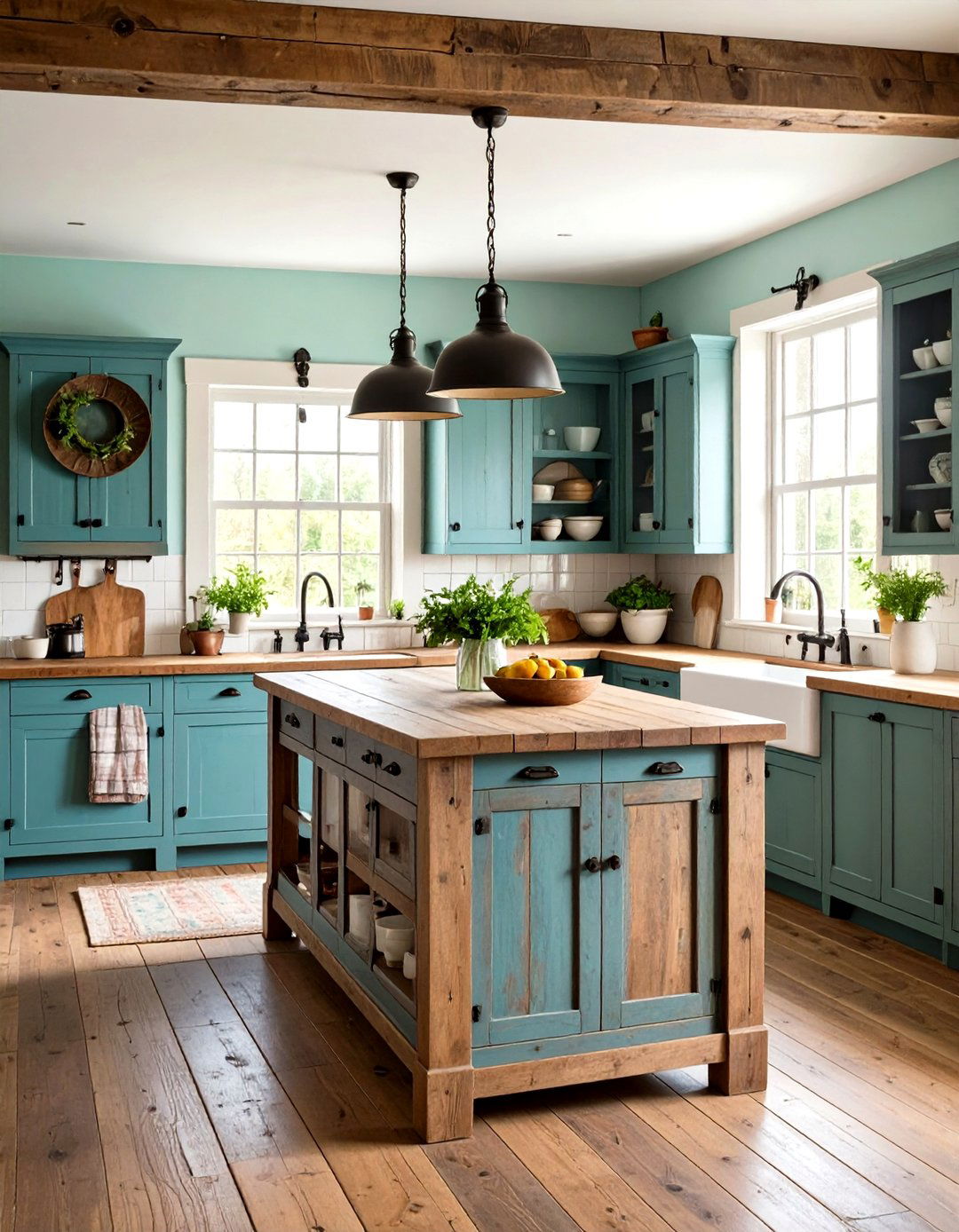
Creating a primitive kitchen centered around reclaimed barn wood cabinetry brings instant character and historical depth to your space. Sourcing old barn wood adds character and history to your kitchen, with elements painted in soft hues or left raw for authentic feel. The weathered wood grain tells stories of generations past while providing durable storage solutions. Pair these cabinets with wrought iron hardware and traditional metal hinges to enhance the rustic appeal. Distressed wood elements add texture and warmth to the kitchen, creating weathered elegance. Complete this design with open shelving made from matching reclaimed wood, displaying vintage enamelware and mason jars. The natural patina and imperfections in the wood create visual interest while maintaining the primitive aesthetic that celebrates craftsmanship over perfection.
2. Colonial-Style Primitive Kitchen with Fireplace Hearth

Transform your primitive kitchen into a colonial-inspired gathering space by incorporating a traditional fireplace hearth as the focal point. Colonial fireplaces were functional cooking spaces where servants prepared meals, featuring wide and tall designs. This design theme centers around a large stone or brick fireplace with wrought iron accessories like andirons and cooking implements. Colonial kitchens featured wide and tall fireplaces for cooking, with Federal and Georgian architectural elements. Surround the hearth with hand-hewn wooden beams and natural stone flooring. Traditional colonial colors like deep blues, warm grays, and cream whites create an authentic period atmosphere. Add a large farmhouse table near the fireplace for food preparation and family gatherings. Copper pots and cast iron cookware displayed on wall-mounted racks complete this historically-inspired primitive kitchen design.
3. Primitive Kitchen with Farmhouse Sink and Butcher Block Island
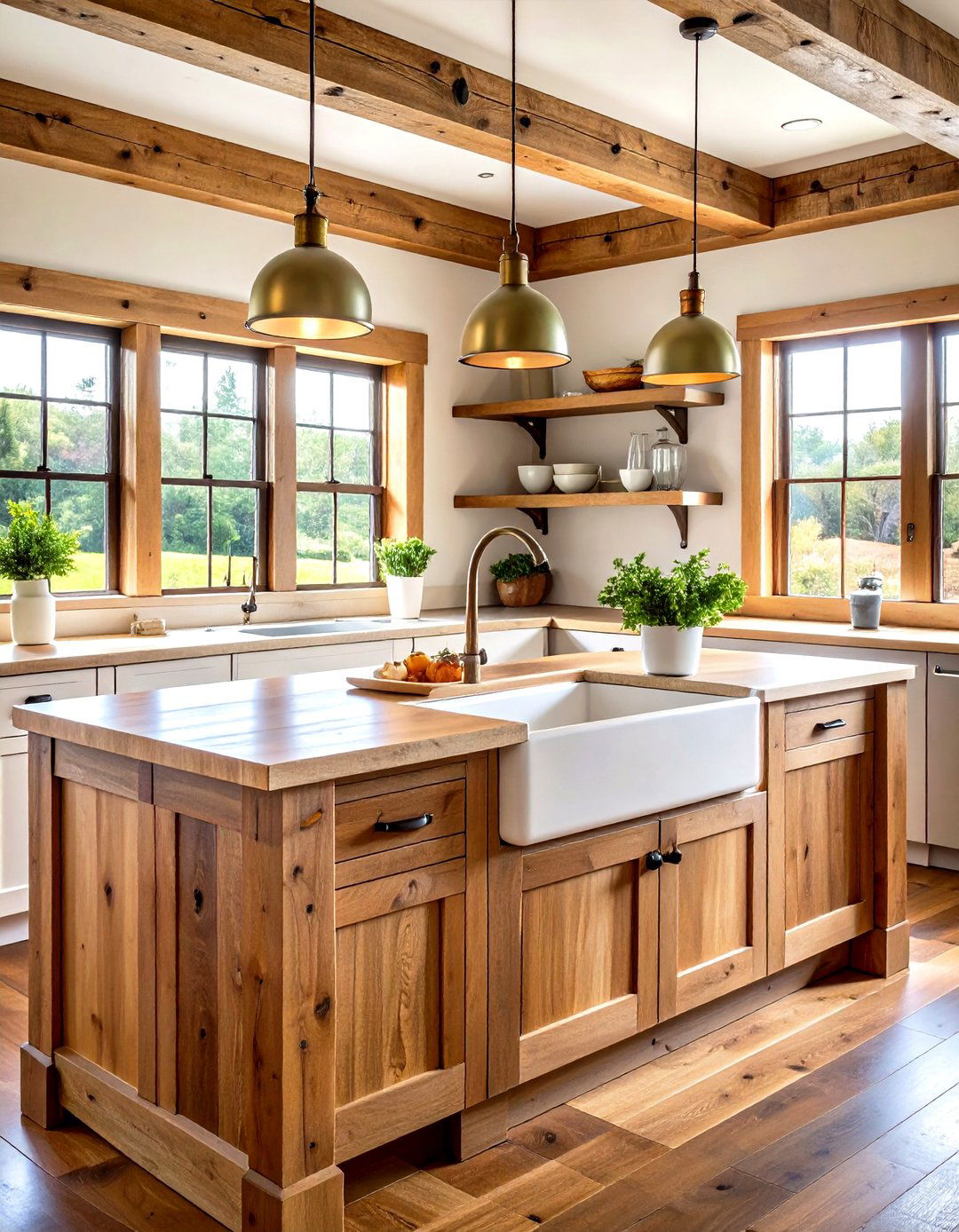
Design a primitive kitchen that combines functionality with rustic charm through a classic farmhouse sink and substantial butcher block island. Butcher block kitchen islands are great for primitive kitchen designs, adding natural wood elements. The deep, wide farmhouse sink serves as both a practical workstation and visual anchor for the space. Farmhouse sinks handle high-volume daily use and pair beautifully with unlacquered brass fixtures. Create the island from thick, solid wood planks with visible grain patterns and natural imperfections. Add open shelving beneath for displaying primitive pottery and baskets. Traditional metal brackets support floating shelves above the sink area. The combination of warm wood tones and cool metal accents creates perfect balance while maintaining the primitive aesthetic focused on natural materials and honest craftsmanship.
4. Early American Primitive Kitchen with Pewter and Copper Accents

Embrace early American heritage by designing a primitive kitchen featuring authentic pewter and copper accents throughout the space. Brass and copper kettles were precious possessions, often worth three pounds apiece and forming important estate items. Display antique copper pots and pewter plates on open wooden shelving, creating both functional storage and decorative elements. Traditional metals like wrought iron, aged brass, and copper have rustic weathered appearance that evokes history and authenticity. Choose cabinet hardware in aged brass or copper finishes to complement the metallic theme. Install pendant lights with copper shades over work areas. The warm tones of these metals pair beautifully with natural wood cabinets and stone countertops. Add copper canisters and pewter serving pieces to complete the authentic early American primitive kitchen atmosphere that celebrates traditional craftsmanship and materials.
5. Primitive Kitchen with Stone Countertops and Exposed Beams
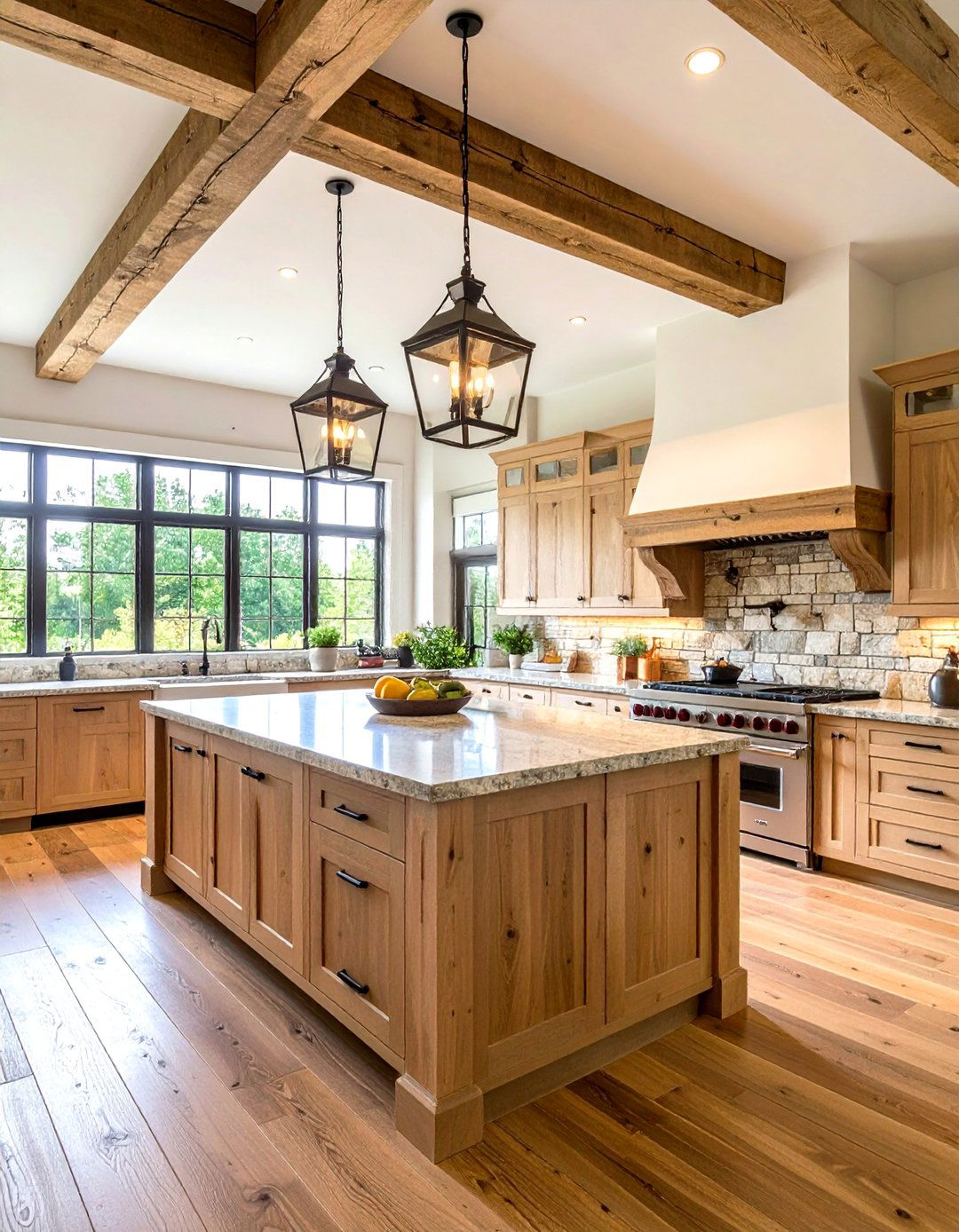
Create a primitive kitchen that showcases natural stone countertops paired with dramatic exposed wooden beams overhead. Stone floors and raw wood beams carry the essence of nature from outside to inside. Choose local stone materials like granite, soapstone, or slate for countertops, celebrating their natural variations and imperfections. Exposed wood beams on the ceiling support the rustic style. The ceiling beams should appear hand-hewn with visible adze marks and natural irregularities. This combination creates a strong foundation for primitive design, emphasizing the beauty of raw materials. Add wrought iron light fixtures suspended from the beams to provide ambient lighting. Wooden cabinets with raised panel doors complement the stone and beam elements. The result is a kitchen that feels like it was carved from nature itself, honoring traditional building techniques and materials.
6. Primitive Kitchen with Mason Jar Storage and Open Shelving
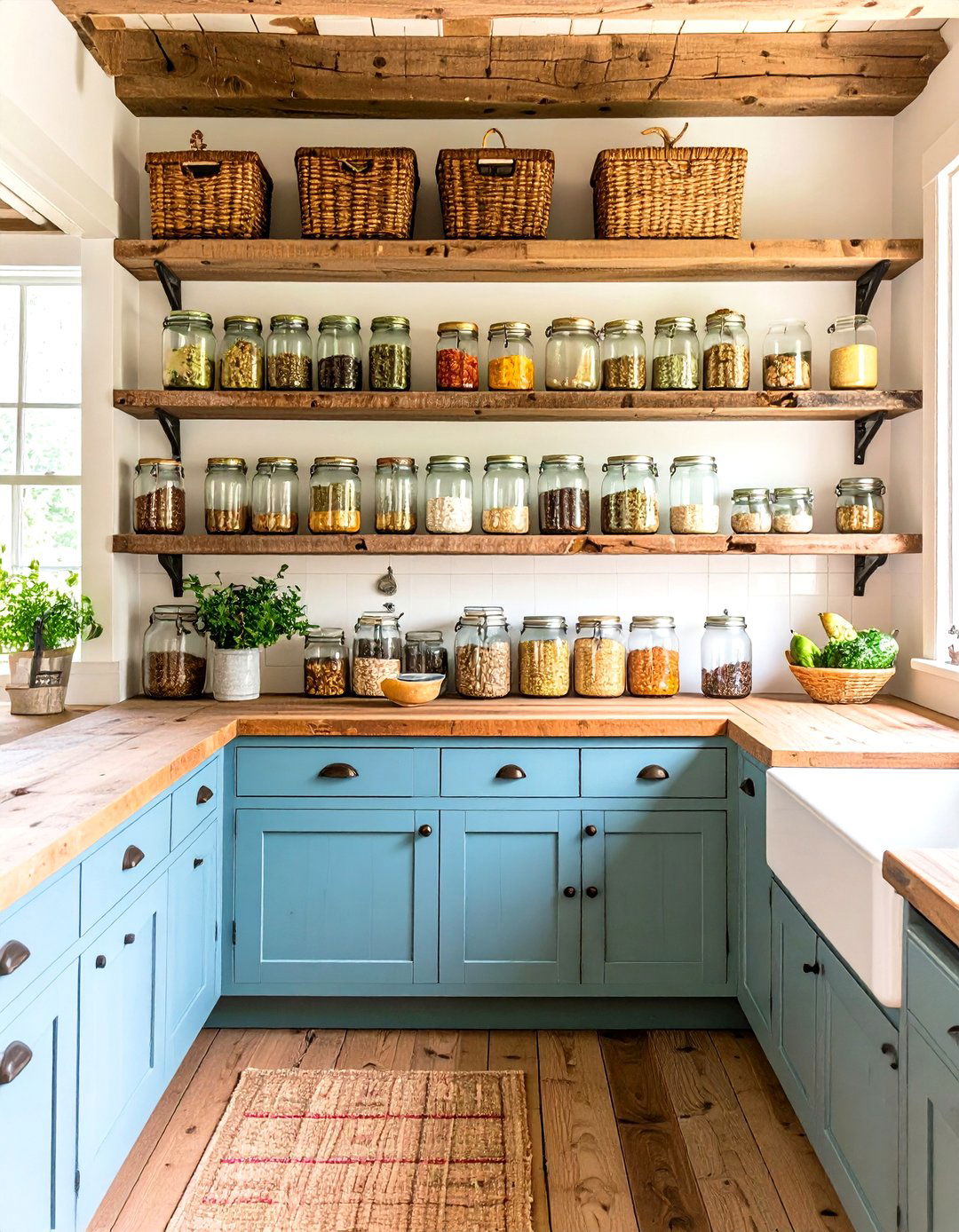
Design a primitive kitchen centered around mason jar storage systems and practical open shelving throughout the space. Open shelves filled with jars transform a space, lending authentic earthy feel crucial to primitive kitchen decor. Install sturdy wooden shelves using traditional joinery techniques, displaying collections of vintage mason jars in various sizes and colors. Transparent jars showcase contents beautifully and create visually appealing displays while maximizing space. The jars serve dual purposes as both storage containers and decorative elements, holding everything from dried herbs to bulk ingredients. Open shelving provides easy access to most used kitchen utensils and creates spacious atmosphere. Arrange the jars thoughtfully to create visual interest while maintaining functionality. Add wire baskets and wooden boxes to complement the jar storage system. This design celebrates the primitive principle of functional beauty, where everyday items become decorative elements.
7. Primitive Kitchen with Enamelware and Speckled Dinnerware
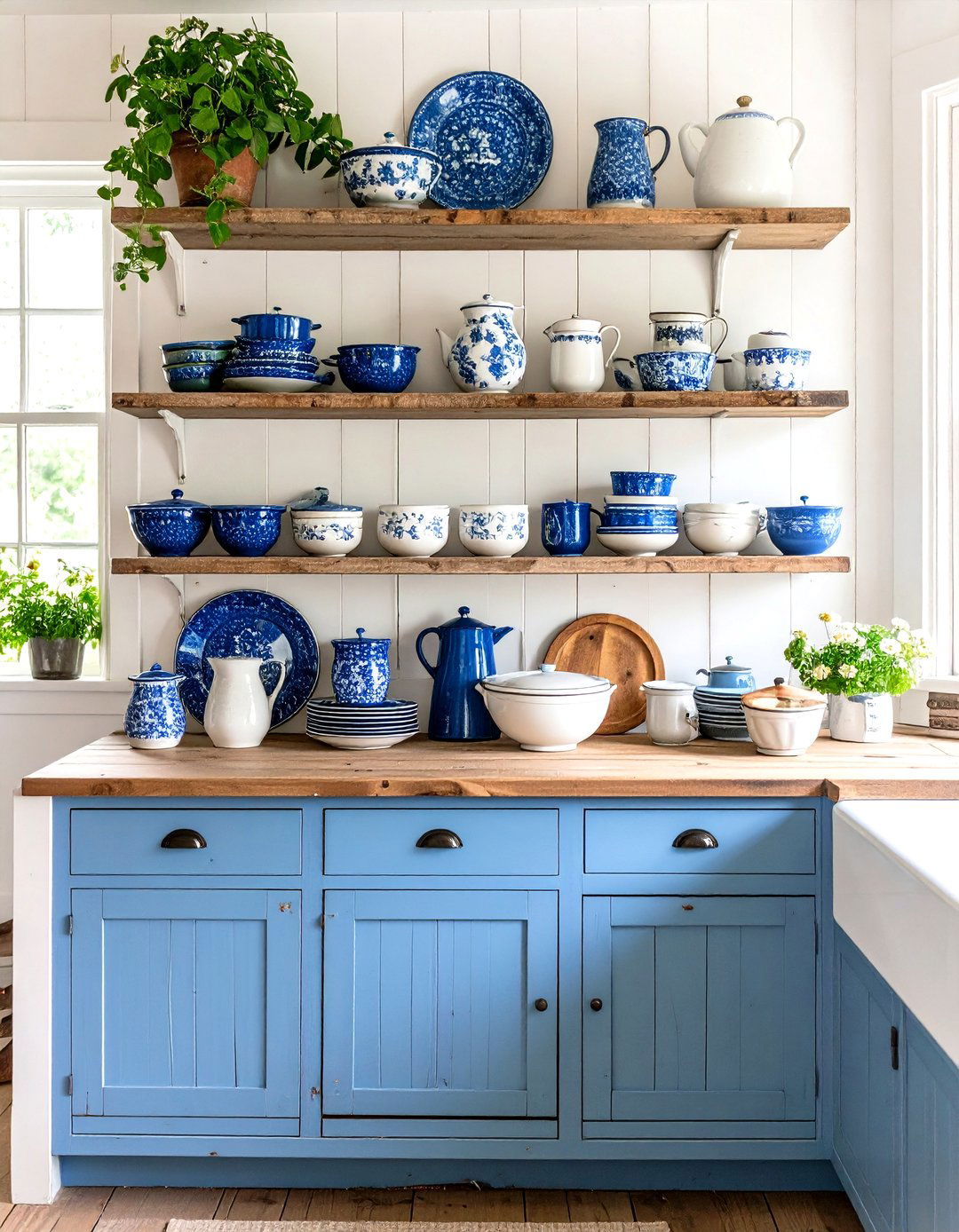
Transform your primitive kitchen by incorporating authentic enamelware and speckled dinnerware as both functional pieces and decorative elements. Enamelware speckled jugs, cups, and plates create vintage aesthetic while ensuring durability and functionality. Display collections of blue and white speckled dishes on open shelving, creating visual interest through repetition and pattern. Speckled pitchers serve as rustic centerpieces and functional vessels, while enamelware dinnerware sets the stage for memorable family meals. The distinctive speckled pattern adds texture and character to the primitive kitchen design. Choose pieces in traditional colors like navy blue, forest green, or classic white with black speckles. Hang enamelware ladles and serving spoons from wooden pegs or iron hooks. The durability of enamelware makes it perfect for daily use while maintaining the authentic primitive aesthetic that celebrates practical beauty and honest materials.
8. Primitive Kitchen with Hand-Painted Furniture and Folk Art
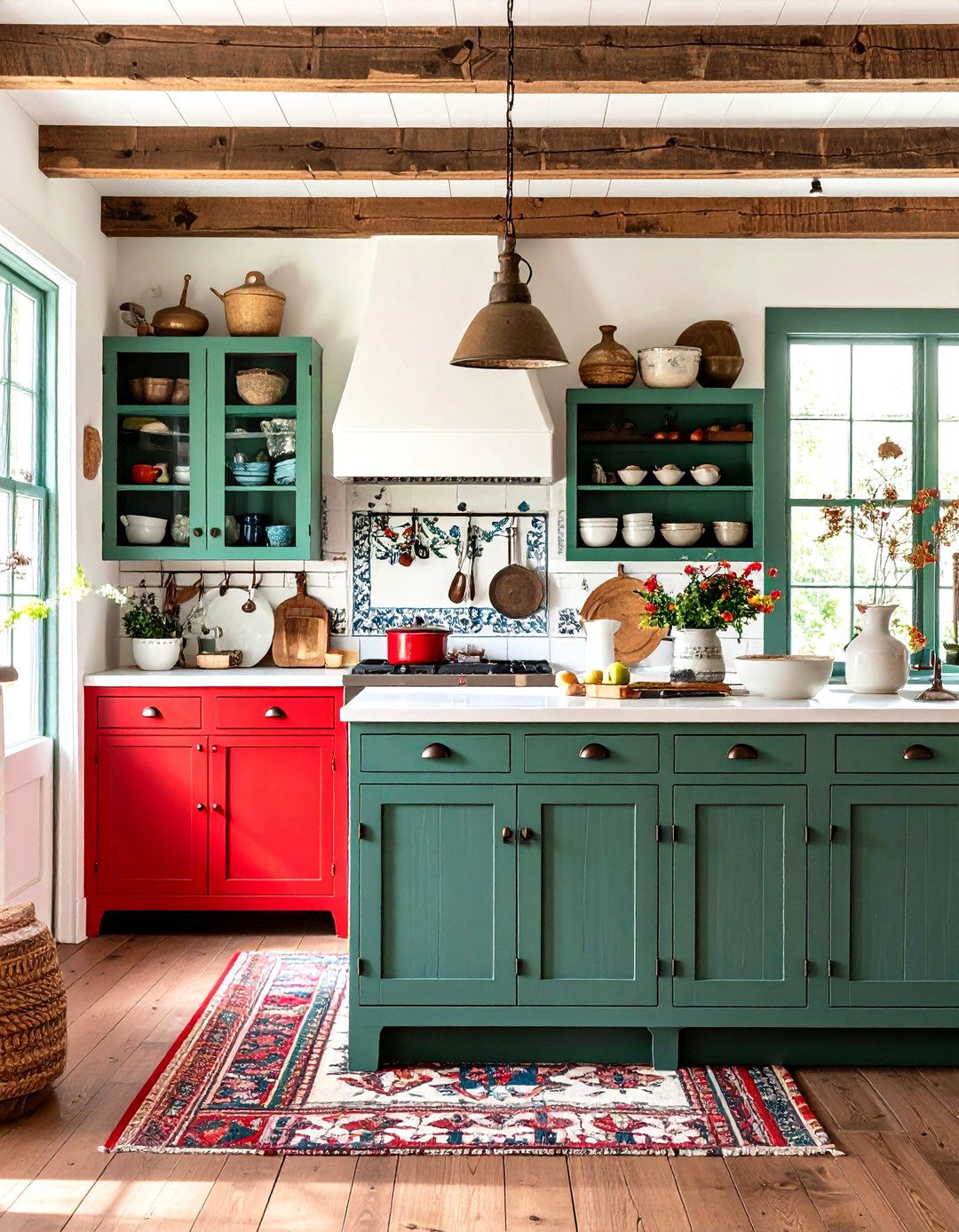
Create a primitive kitchen that showcases hand-painted furniture and folk art elements throughout the design. Early American furniture was painted or stained using local materials, reflecting regional characteristics. Paint wooden cabinets, chairs, and tables in traditional primitive colors like barn red, mustard yellow, or sage green. Barn red infuses rusticity and vitality reminiscent of traditional farm life, while sage brings serene nature-inspired feel. Add folk art stenciling to cabinet doors and furniture surfaces, featuring simple motifs like hearts, stars, or geometric patterns. Display handmade pottery and carved wooden bowls as functional art pieces. Dark and warm color schemes like barn red, navy blue, and mustard resonate with rustic nostalgia and earthy comfort. The hand-painted elements create a personal, artisanal quality that distinguishes this primitive kitchen from mass-produced designs, celebrating individual craftsmanship and cultural heritage.
9. Primitive Kitchen with Checkered Textiles and Homespun Fabrics
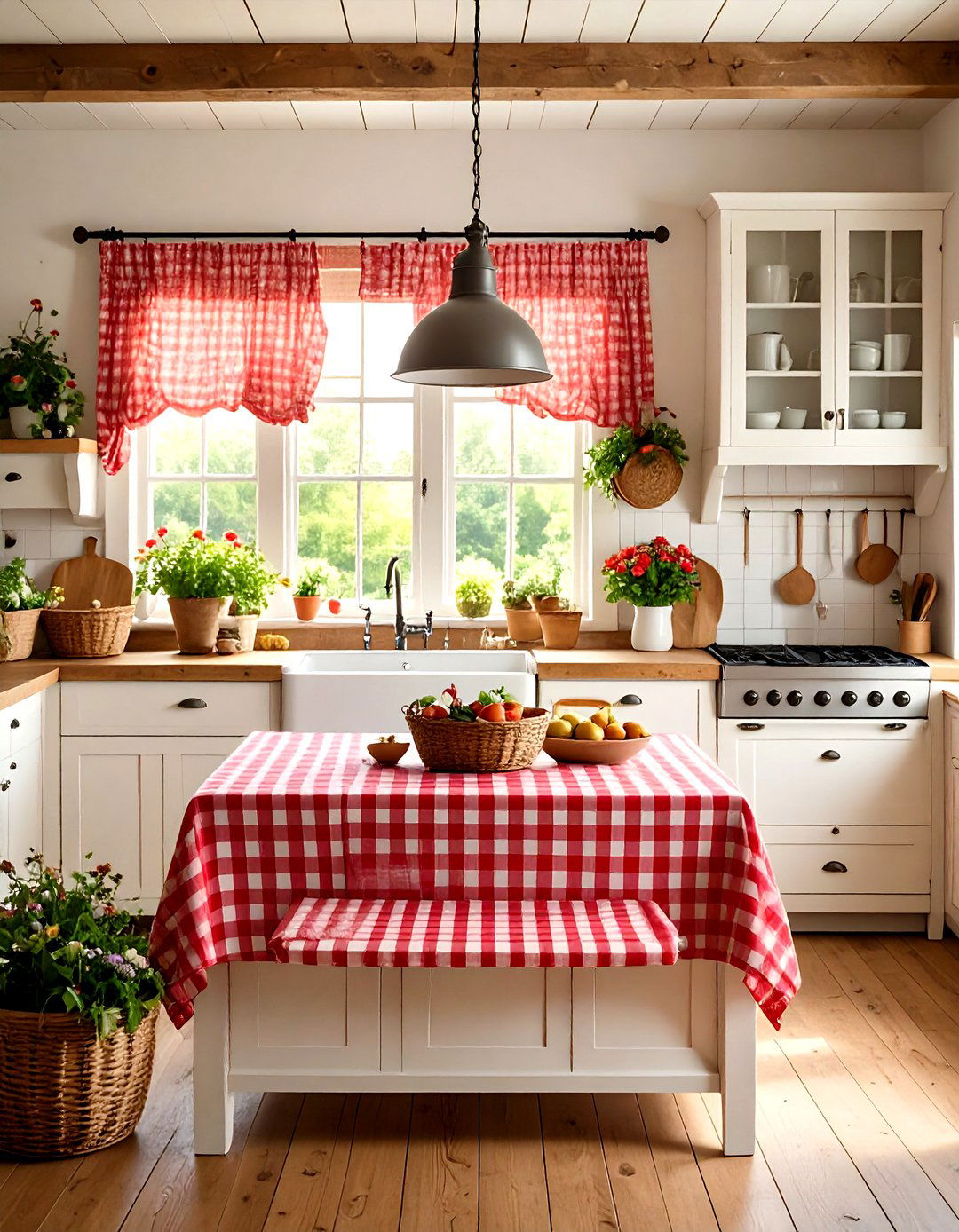
Design a primitive kitchen that incorporates checkered textiles and homespun fabrics throughout the space for authentic country charm. Primitive decor features textiles like wool, jute, or leather, with simple fabrics being most popular. Use red and white checkered tablecloths, curtains, and chair cushions to create visual cohesion. Simple fabrics like cotton, linen, and burlap with gingham patterns adorn curtains, tablecloths, and cushions. The checkered pattern adds traditional country appeal while remaining timeless and functional. Simple fabrics contribute to nostalgic and time-honored feel of primitive decor. Choose curtains in cafe style or floor-length depending on your preference and window size. Add woven baskets and jute rugs to complement the textile elements. The combination of different textures and patterns creates layers of visual interest while maintaining the primitive aesthetic focused on natural, handmade materials and traditional patterns.
10. Primitive Kitchen with Wooden Utensils and Rolling Pin Display
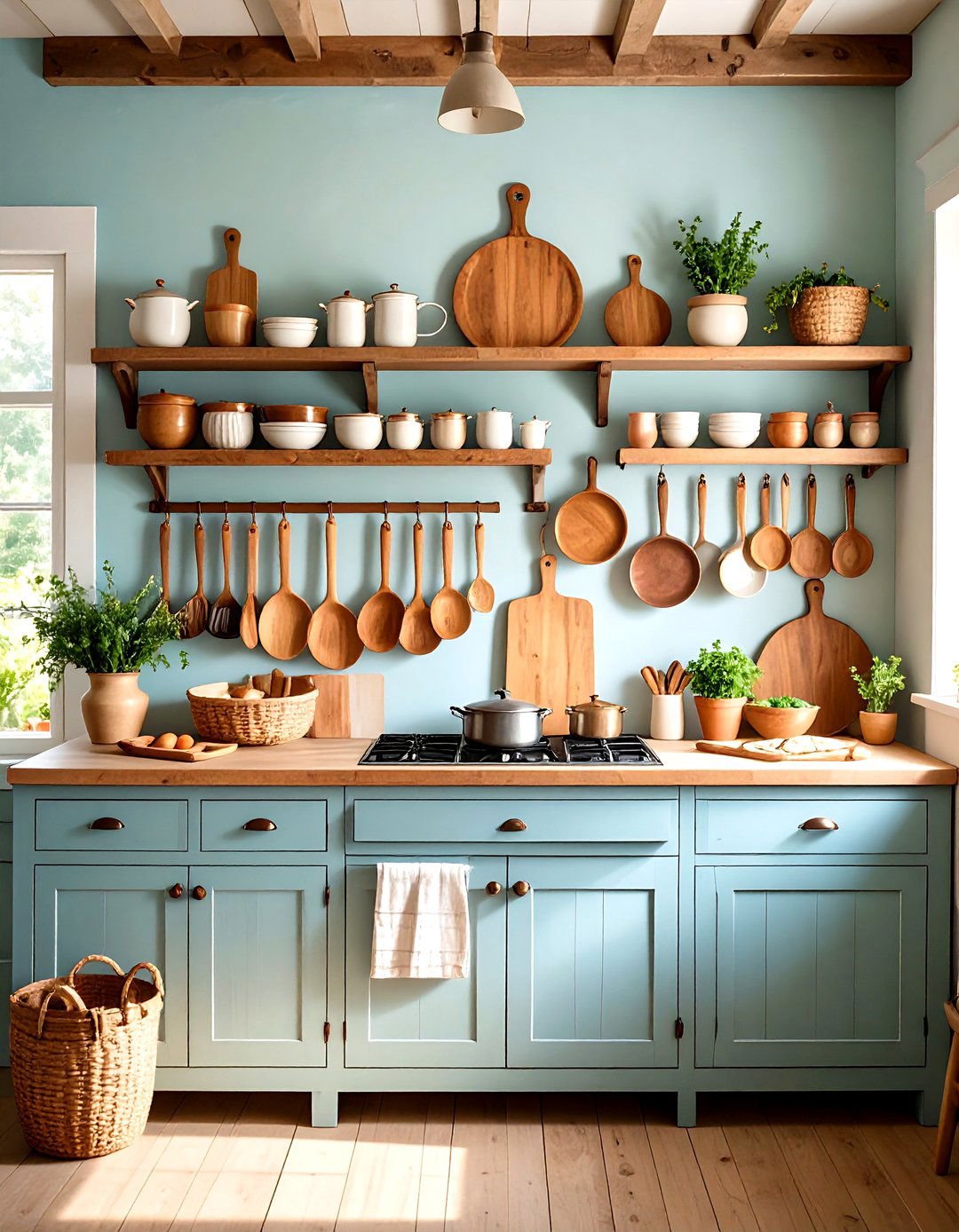
Transform your primitive kitchen by creating displays of wooden utensils and vintage rolling pins as both functional tools and decorative elements. Look for basic kitchen items like wooden spoons and rolling pins that can be layered and designed in unique ways. Mount wooden pegs or iron hooks on walls to display collections of hand-carved spoons, ladles, and spatulas. Basic kitchen items like wooden spoons and rolling pins can be layered and designed uniquely to create primitive touch. Create a dedicated display area for antique rolling pins of various sizes and wood types. The natural grain and patina of aged wood adds warmth and character to the kitchen. Group utensils by size or function for visual organization. Add handmade cutting boards and wooden bowls to complete the collection. This design celebrates the primitive principle that everyday tools can be beautiful, honoring traditional craftsmanship while maintaining full functionality in modern cooking tasks.
11. Primitive Kitchen with Dried Herb Bundles and Harvest Displays
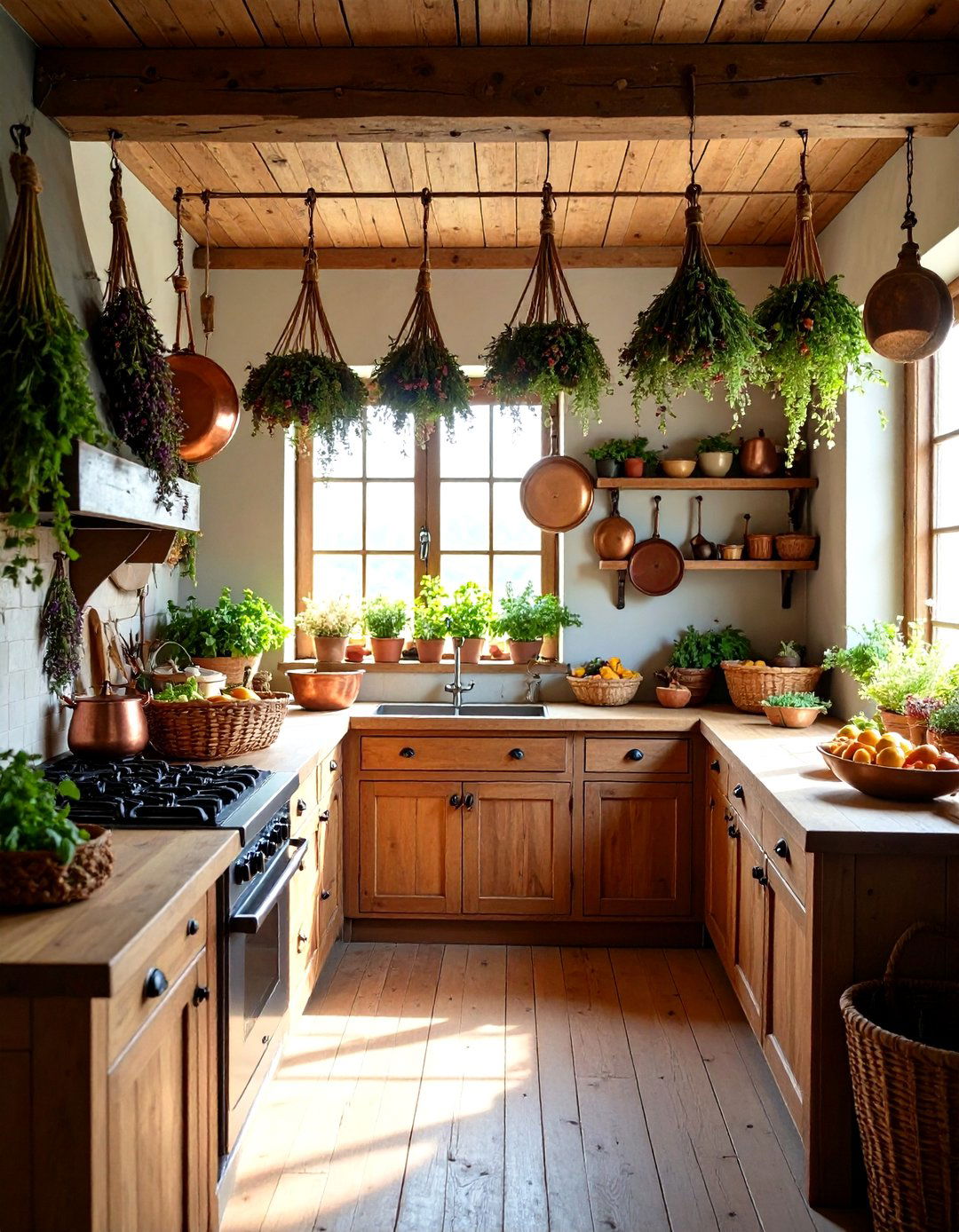
Create a primitive kitchen that celebrates the connection to nature through dried herb bundles and seasonal harvest displays. Displaying fresh herbs or seasonal fruits in rustic bowls makes your kitchen feel alive and inviting. Hang bundles of dried herbs from wooden beams or iron hooks, creating both functional ingredients and natural decorations. Potted herbs on windowsills introduce sage-green elements to the primitive kitchen. Use woven baskets to display seasonal produce like gourds, corn, and dried flowers. The changing displays reflect the seasons and maintain the primitive connection to agricultural life. Add copper or wooden bowls filled with nuts, apples, or other natural elements. This design emphasizes the primitive kitchen's role as a place where nature's bounty is processed and preserved, celebrating the traditional relationship between home and garden while adding organic beauty to the space.
12. Primitive Kitchen with Quilted Textiles and Patchwork Accents
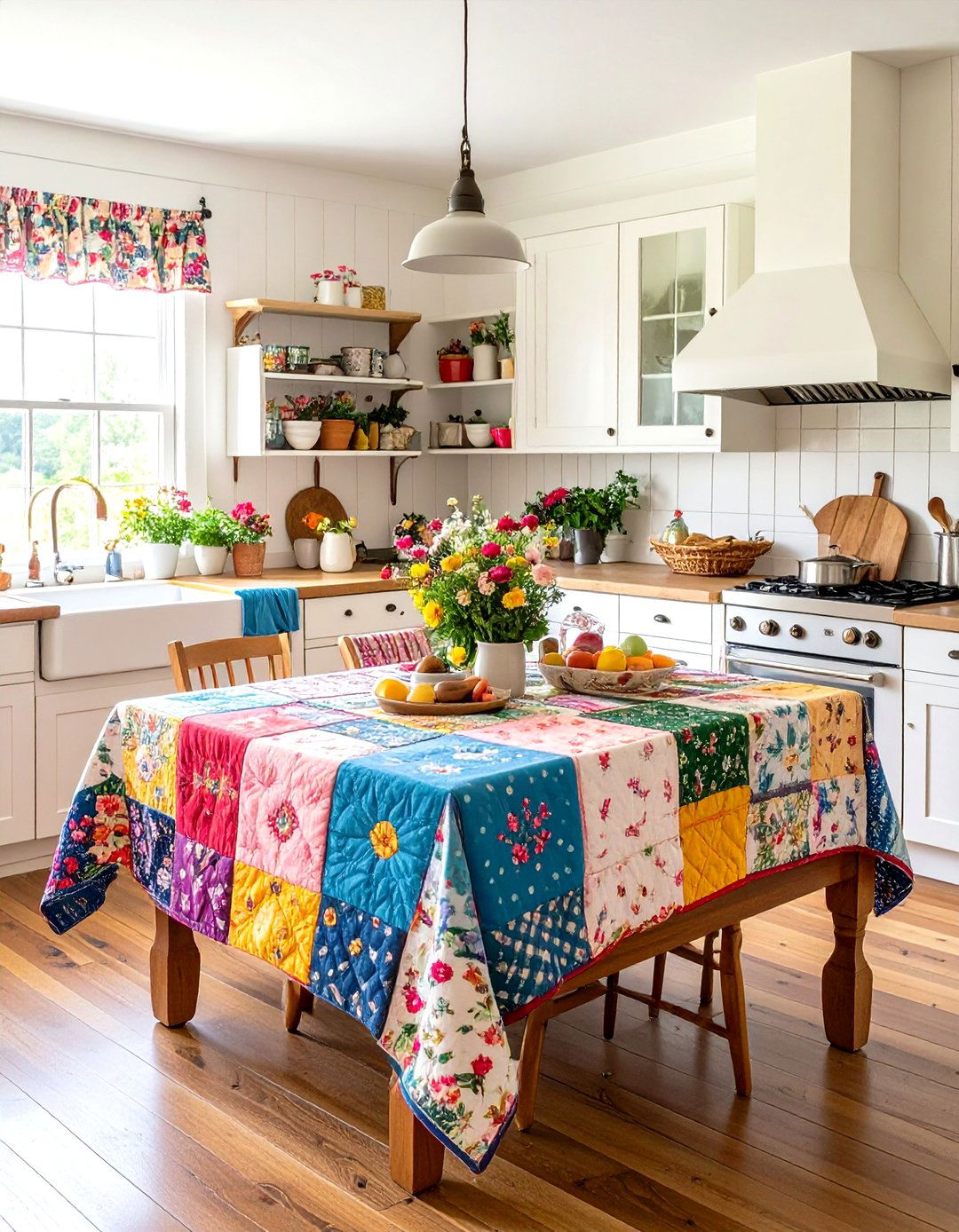
Design a primitive kitchen that incorporates quilted textiles and patchwork accents throughout the space for authentic handmade charm. Homespun fabrics like table runners bring families together at dinner and create cozy atmosphere. Use quilted table runners, pot holders, and chair cushions in traditional patterns like log cabin or nine-patch designs. The patchwork elements add color and texture while maintaining the primitive aesthetic of handmade functionality. Primitive decor features muted palette and emphasis on handmade pieces. Choose fabrics in earthy tones that complement the overall color scheme. Add vintage quilted aprons and dish towels for practical use and display. The quilted textiles create layers of comfort and visual interest while honoring traditional needlework skills. This design celebrates the primitive principle of using every scrap and creating beauty from necessity, reflecting the resourcefulness and creativity of early American homemakers.
13. Primitive Kitchen with Candlelight and Lantern Illumination
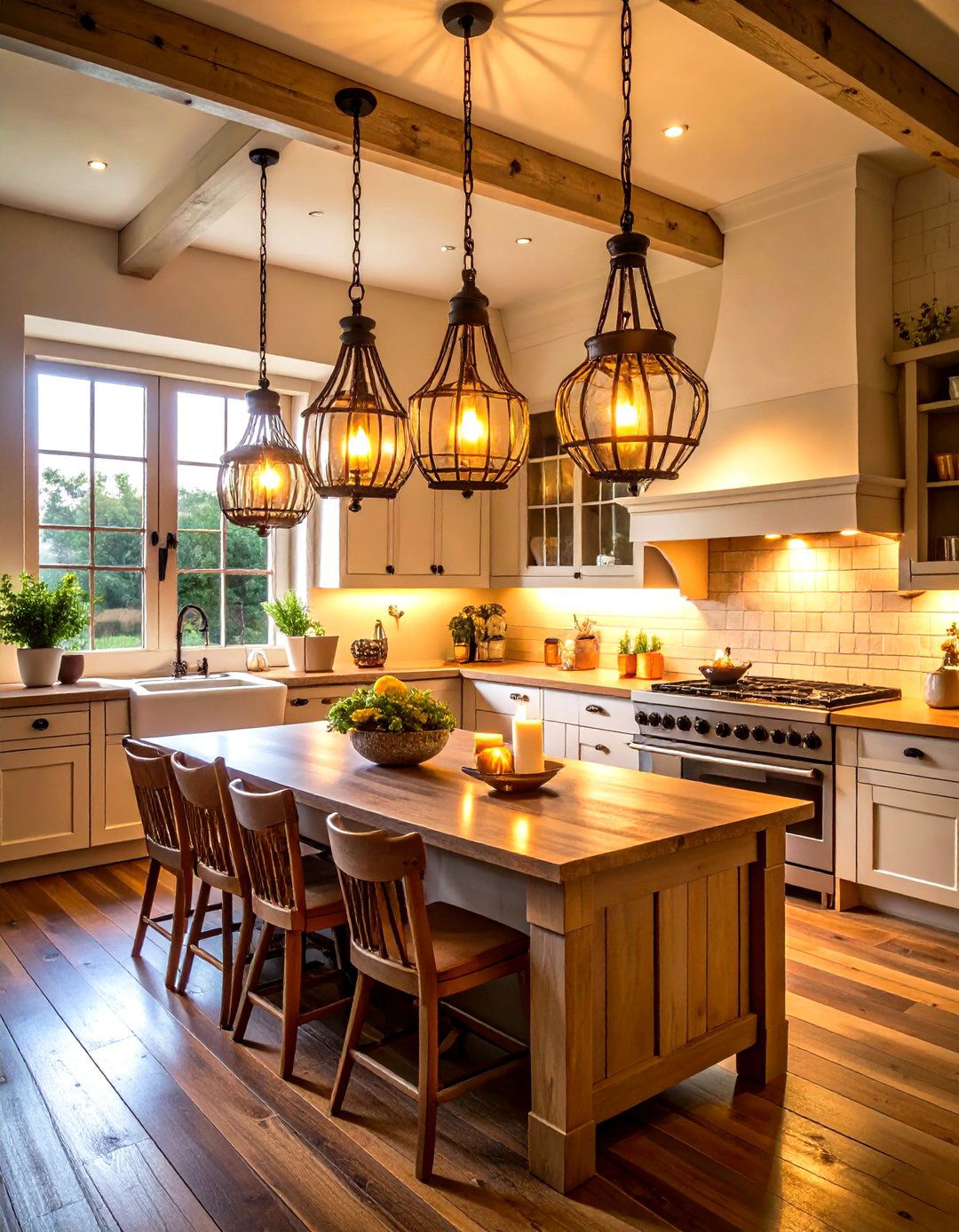
Transform your primitive kitchen with warm candlelight and lantern illumination that recreates the ambiance of pre-electric kitchens. Candles and lanterns add lovely touch of warmth and coziness during evening meals. Install wrought iron chandeliers that hold multiple candles, creating central focal points for dining areas. Warm ambient lighting is critical in creating the right mood for primitive kitchen. Use hurricane lanterns on countertops and shelves for functional task lighting. The flickering light creates shadows and warmth that artificial lighting cannot replicate. Lighting can transform your kitchen and highlight its best features. Add sconces made from aged metals to provide wall-mounted illumination. The combination of candlelight and lanterns creates an intimate, contemplative atmosphere perfect for family gatherings and quiet meal preparation. This design honors the primitive kitchen's role as the heart of the home where families gathered by lamplight.
14. Primitive Kitchen with Ladder-Back Chairs and Communal Dining
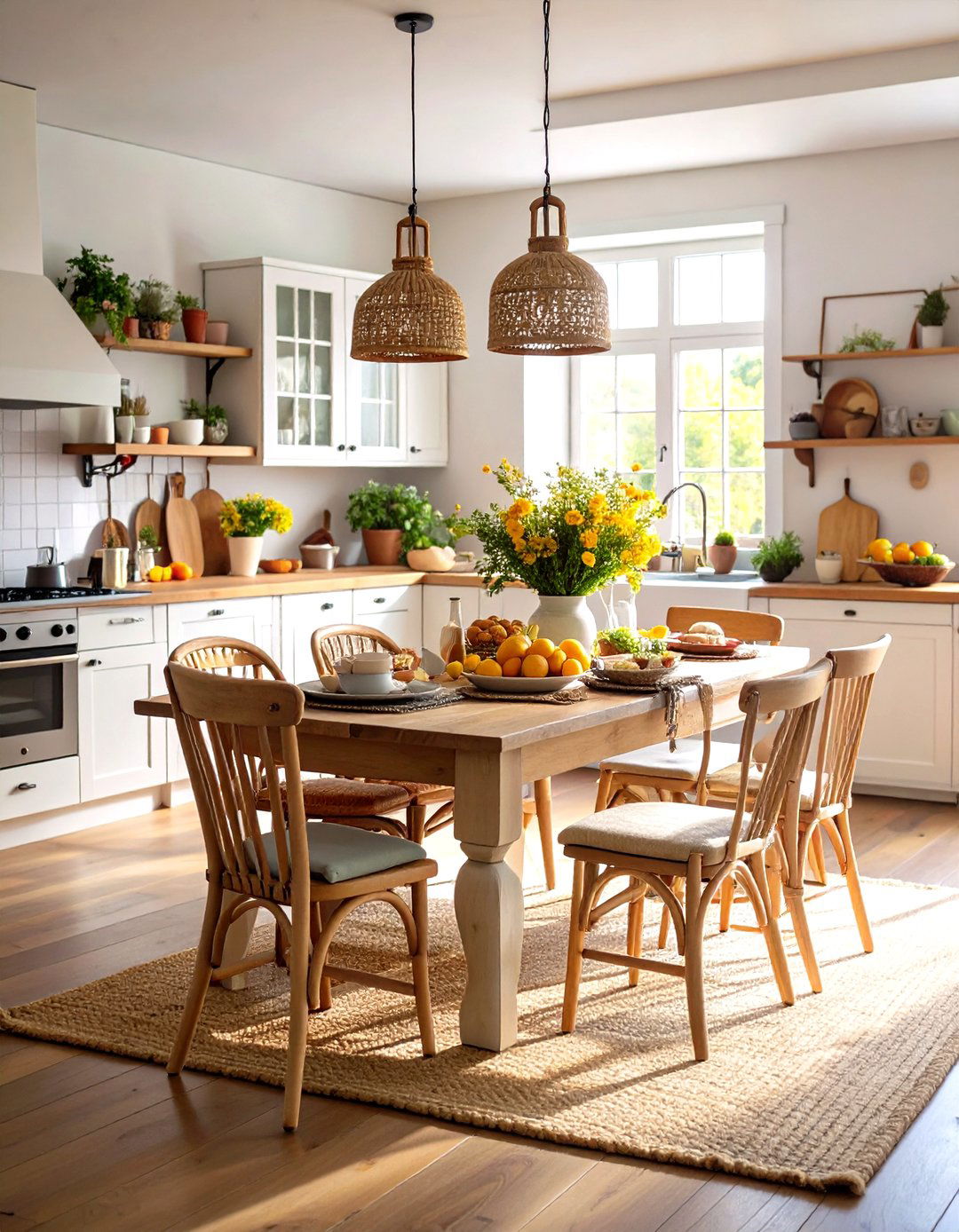
Create a primitive kitchen centered around ladder-back chairs and communal dining arrangements that encourage family gathering. Adding dining space directly in the kitchen breathes life into the room and encourages conversation flow. Use traditional ladder-back chairs with woven seats around a large farmhouse table. The colonial-style kitchen was where all servants, workers, and family came together to eat and share stories. The simple, functional design of ladder-back chairs embodies primitive aesthetics while providing comfortable seating. Distressed wood chairs and tables with handcrafted furniture create harmony and turn every meal into connection opportunity. Add cushions in primitive patterns or leave the seats natural for authentic appearance. The communal arrangement emphasizes the primitive kitchen's role as a social gathering space. This design celebrates the importance of shared meals and conversation in creating family bonds and community connections.
15. Primitive Kitchen with Beadboard Wainscoting and Painted Walls
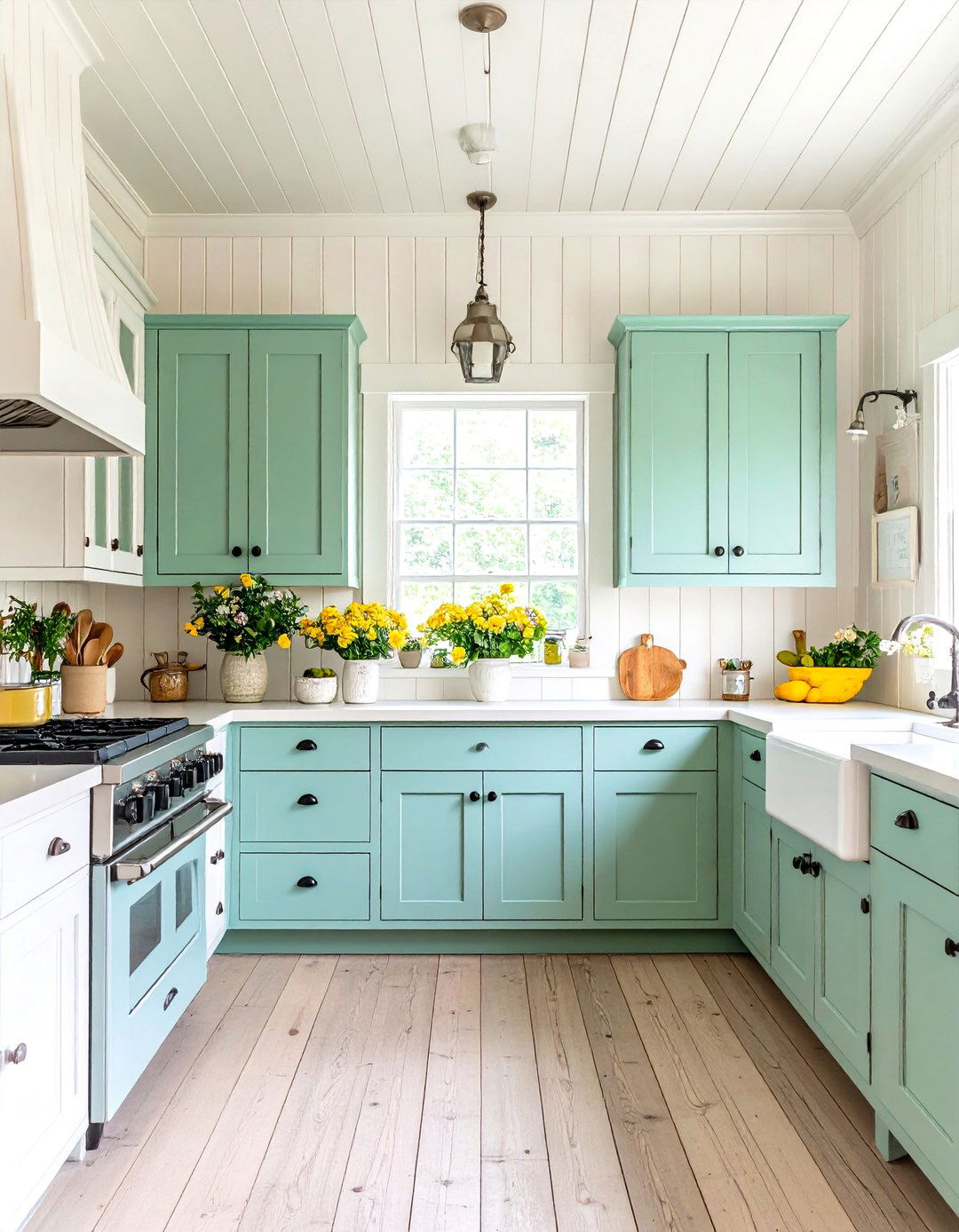
Design a primitive kitchen featuring beadboard wainscoting and painted walls in authentic period colors. Painted beadboard adds farmhouse charm and creates visual interest. Install beadboard wainscoting to chair rail height, painting it in classic white or cream for contrast against colored upper walls. Light colors like white, cream, and beige are common choices for colonial cabinets, complementing simple unadorned design. Choose upper wall colors in traditional primitive hues like sage green, barn red, or deep blue. The beadboard texture adds depth and visual interest while protecting walls from kitchen activities. Cream and putty offer soft neutral backdrops that allow other elements to shine. The combination of textures and colors creates a layered appearance that feels both sophisticated and rustic. This design honors traditional wall treatments while providing practical durability for kitchen environments.
16. Primitive Kitchen with Copper Pots and Cast Iron Cookware

Transform your primitive kitchen by showcasing collections of copper pots and cast iron cookware as both functional tools and decorative elements. Great brass and copper kettles often held fifteen gallons and vast iron pots sometimes weighed forty pounds. Display hanging copper pots from ceiling-mounted pot racks or wall-mounted iron hooks. Brass-ware formed important estate items, with some kettles worth three pounds apiece. The warm glow of copper adds richness to the primitive kitchen while cast iron provides durability and authentic cooking performance. Traditional metals with weathered appearance help evoke sense of history and authenticity. Arrange pieces by size and frequency of use for both beauty and functionality. The natural patina and aging of these metals creates character that improves with time. This design celebrates the primitive kitchen's focus on quality tools that last generations while adding visual warmth and historical authenticity.
17. Primitive Kitchen with Grain-Painted Cabinets and Decorative Stenciling
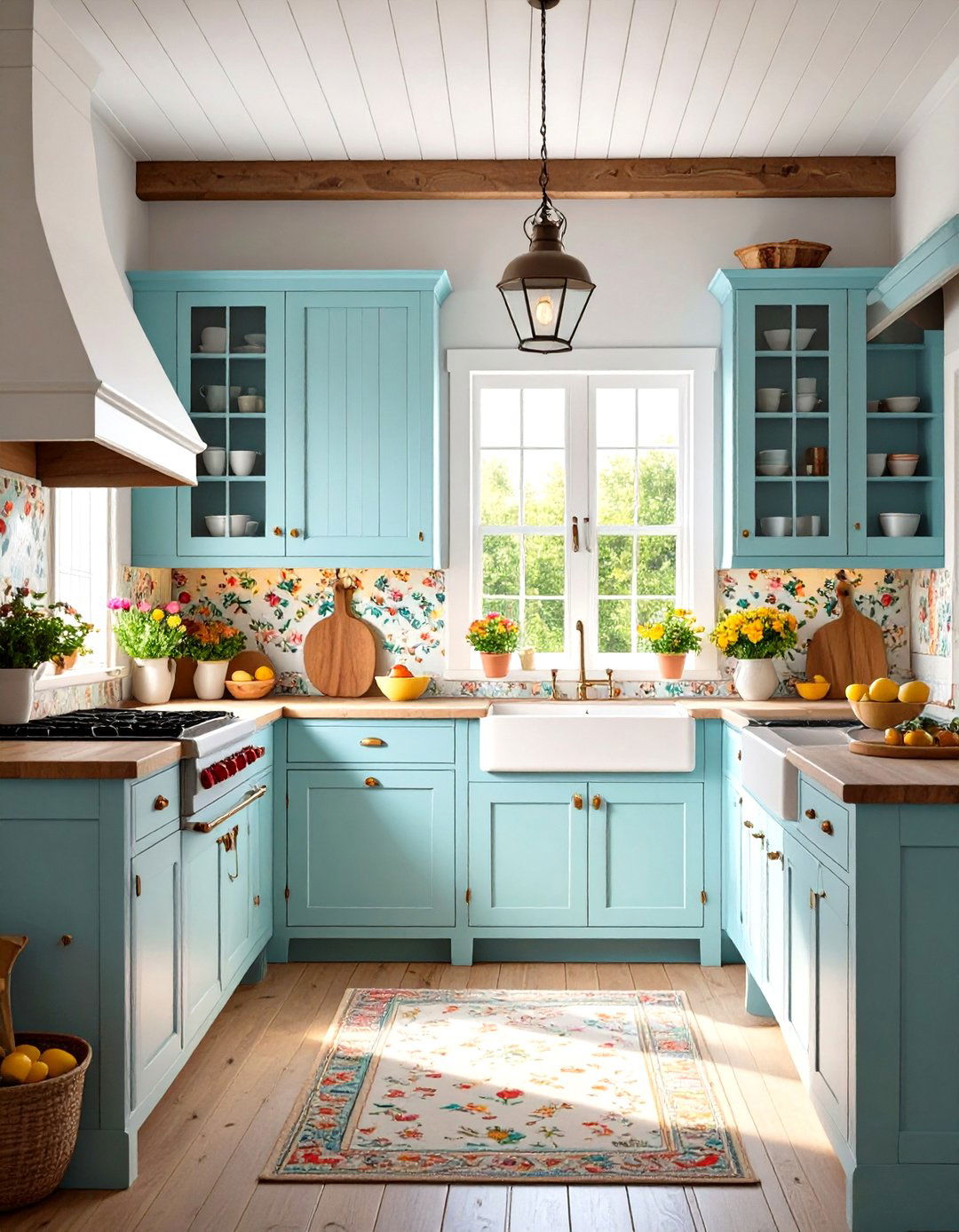
Create a primitive kitchen featuring grain-painted cabinets and decorative stenciling that showcases traditional decorative techniques. Stenciling was popular interior decorating technique in early American homes, allowing personalization with perfect quotes or images. Apply grain painting techniques to plain wooden cabinets, creating the appearance of expensive wood grains with paint. Add stenciled borders or motifs to cabinet doors, walls, and furniture in traditional patterns. Early American furniture was painted or stained using local materials and regional characteristics. Use authentic stencil patterns like hearts, stars, leaves, or geometric designs in coordinating colors. The decorative painting techniques add personality and artisanal quality to the primitive kitchen design. Primitive decor emphasizes handmade pieces and traditional techniques. This design celebrates the resourcefulness of early American decorators who created beauty through skilled craftsmanship and creative painting techniques rather than expensive materials.
18. Primitive Kitchen with Punched Tin Panels and Pie Safes
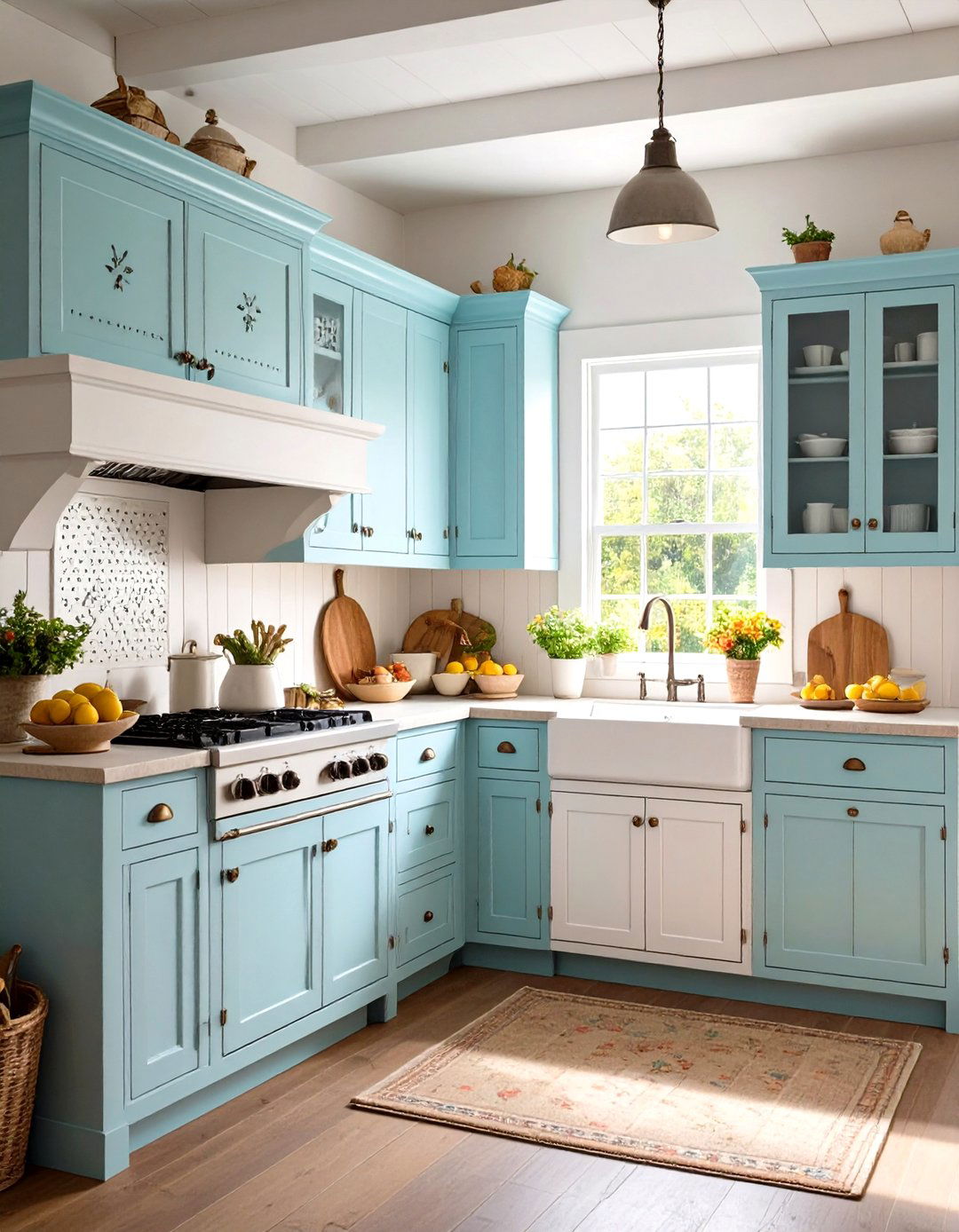
Design a primitive kitchen incorporating punched tin panels and traditional pie safes for authentic country storage solutions. Primitive punched tins and brassware can transform your kitchen with colonial style details. Install punched tin panels as cabinet door inserts, creating ventilation for food storage while adding decorative patterns. Use traditional pie safes with punched tin doors to store baked goods and kitchen supplies. Very little tin was seen in colonial times, with latten ware being used instead as a kind of brass. The perforated metal allows air circulation while protecting contents from insects. Choose patterns that complement the overall primitive design, such as stars, hearts, or geometric motifs. The tin panels add textural interest while serving practical storage functions. This design honors traditional food preservation methods while creating distinctive visual elements that distinguish the primitive kitchen from modern designs.
19. Primitive Kitchen with Fieldstone Floors and Rustic Textures

Transform your primitive kitchen with fieldstone floors and rustic textures that connect the space to natural materials. Floors in colonial kitchens often feature natural materials like slate, grounding high-quality but efficient design. Install fieldstone or slate flooring with natural variations in color and texture. Stone floors carry the essence of nature from outside to inside. The uneven surfaces and natural patterns create authentic primitive character while providing durable, easy-to-clean flooring. Pairing darker floors with light-colored cabinets adds contrast and depth to colonial kitchen design. Add woven rugs in traditional patterns for warmth and comfort underfoot. The stone flooring requires minimal maintenance while aging beautifully over time. This design celebrates the primitive kitchen's connection to the earth and natural materials, creating a foundation that feels solid and permanent while honoring traditional building techniques.
20. Primitive Kitchen with Harvest Tables and Bench Seating
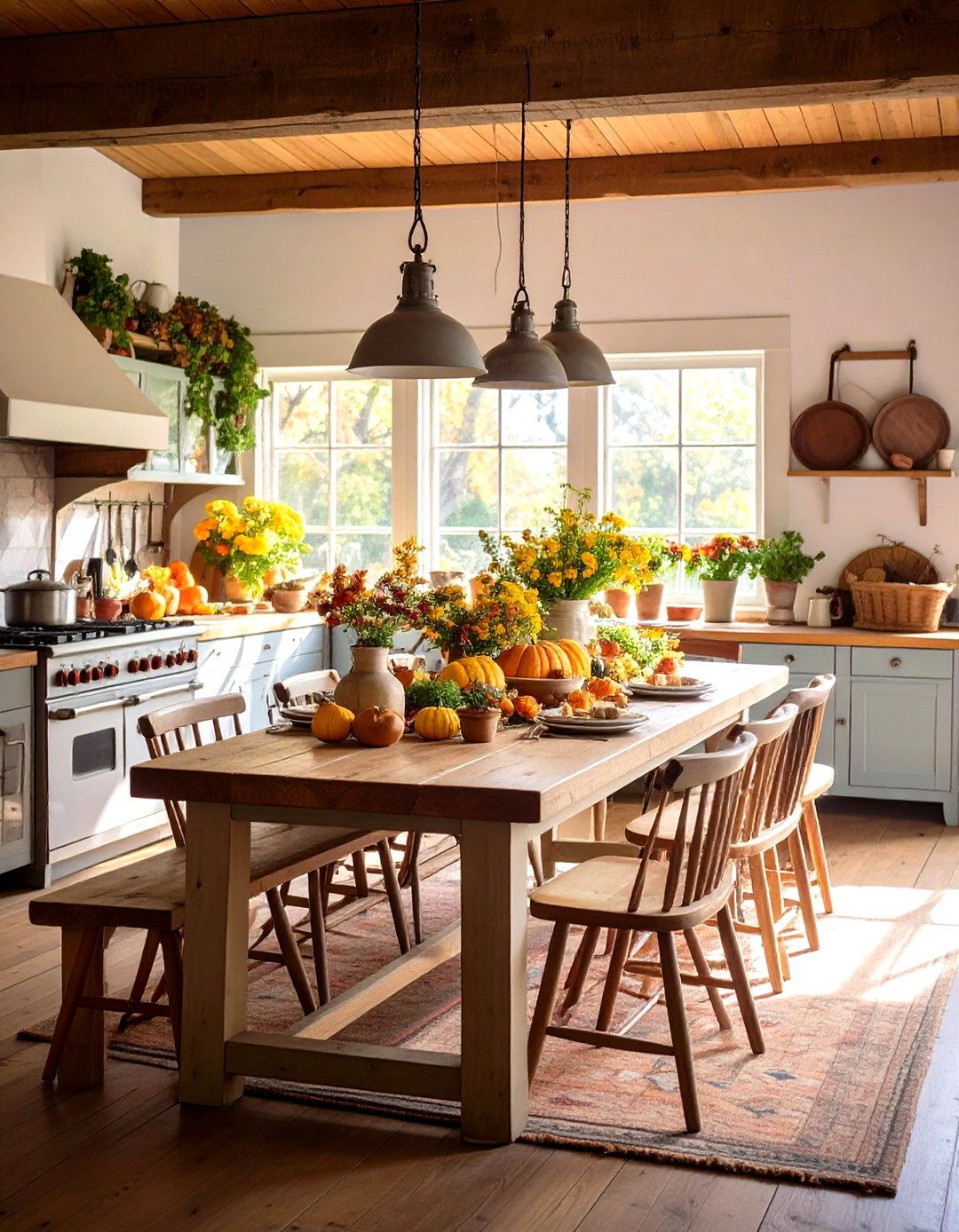
Create a primitive kitchen centered around harvest tables and bench seating that emphasizes communal dining and family gathering. Large farmhouse-style dining tables serve as focal points, inviting family and friends to gather. Use a substantial harvest table made from thick wooden planks with visible grain and natural imperfections. Large farm tables were places to prepare meals and served as eating areas where families came together. Add wooden benches and mismatched chairs for authentic primitive seating arrangements. Comfortable seating like cushioned benches or mismatched chairs enhances inviting atmosphere. The harvest table serves multiple functions as food preparation surface, dining area, and social gathering place. This design emphasizes the primitive kitchen's role as the heart of the home where daily life unfolds. The simple, functional furniture celebrates honest craftsmanship while creating an environment that encourages lingering conversation and shared meals.
Conclusion:
These primitive kitchen ideas demonstrate how timeless design principles can create spaces that feel both authentic and functional. By incorporating natural materials, traditional techniques, and vintage elements, each design celebrates the beauty of simplicity and craftsmanship. Whether you choose reclaimed wood cabinetry, colonial fireplace elements, or harvest table dining, primitive kitchens offer endless opportunities to create meaningful connections with the past while serving modern needs. The key lies in balancing historical authenticity with contemporary functionality, ensuring your primitive kitchen becomes a welcoming gathering place for family and friends. These designs prove that the most beautiful kitchens are those that honor tradition while embracing the warmth and character that only handcrafted elements can provide.


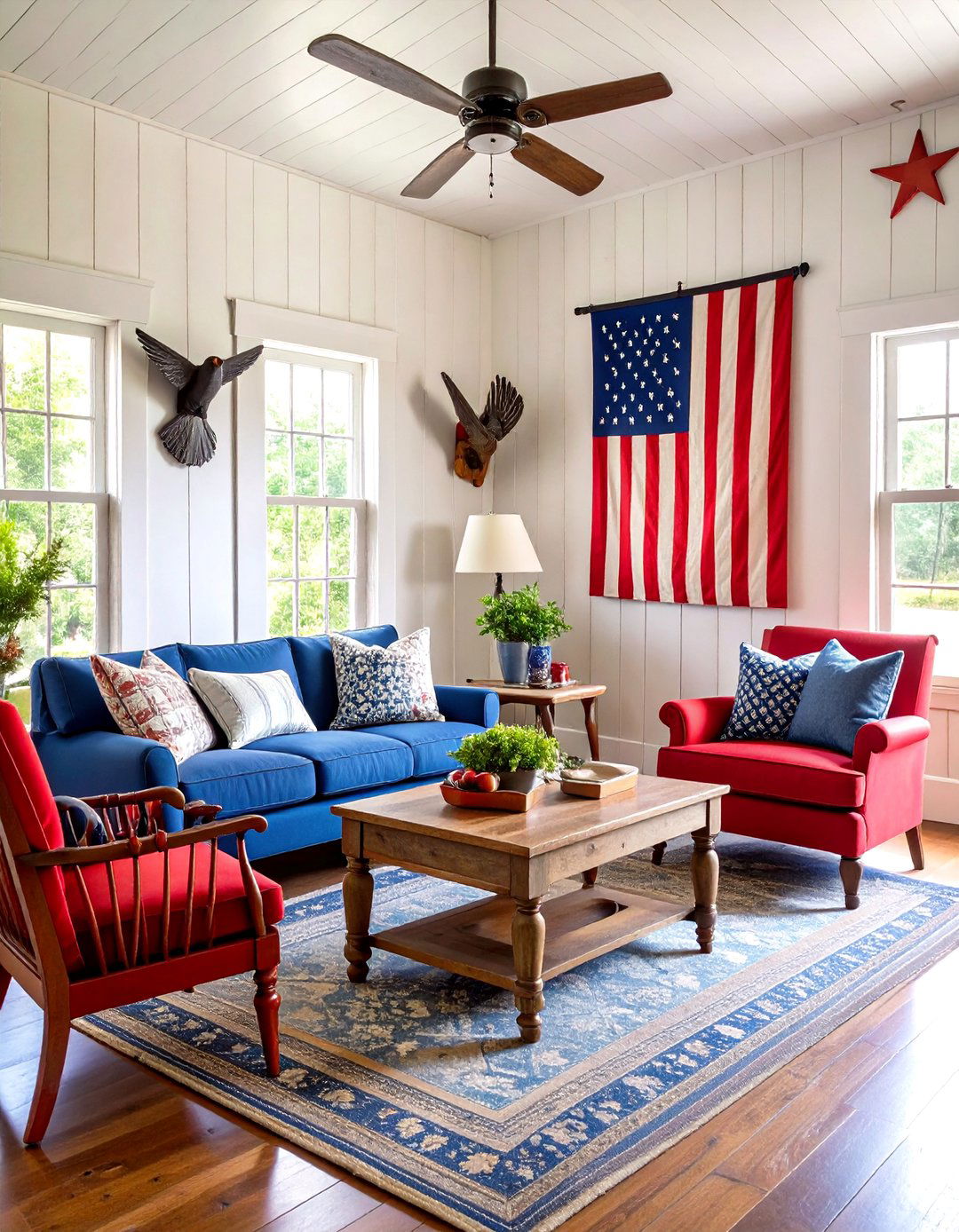
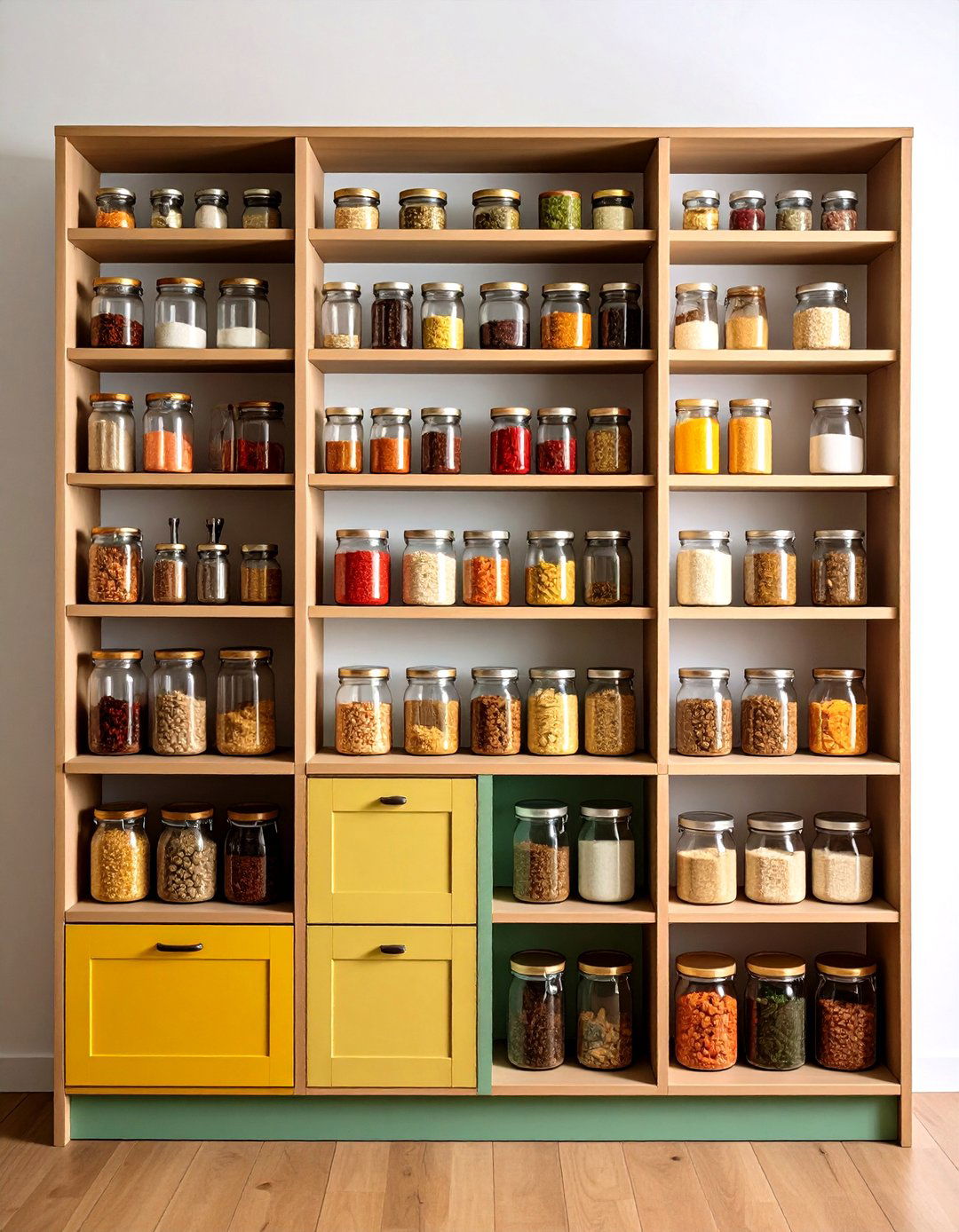
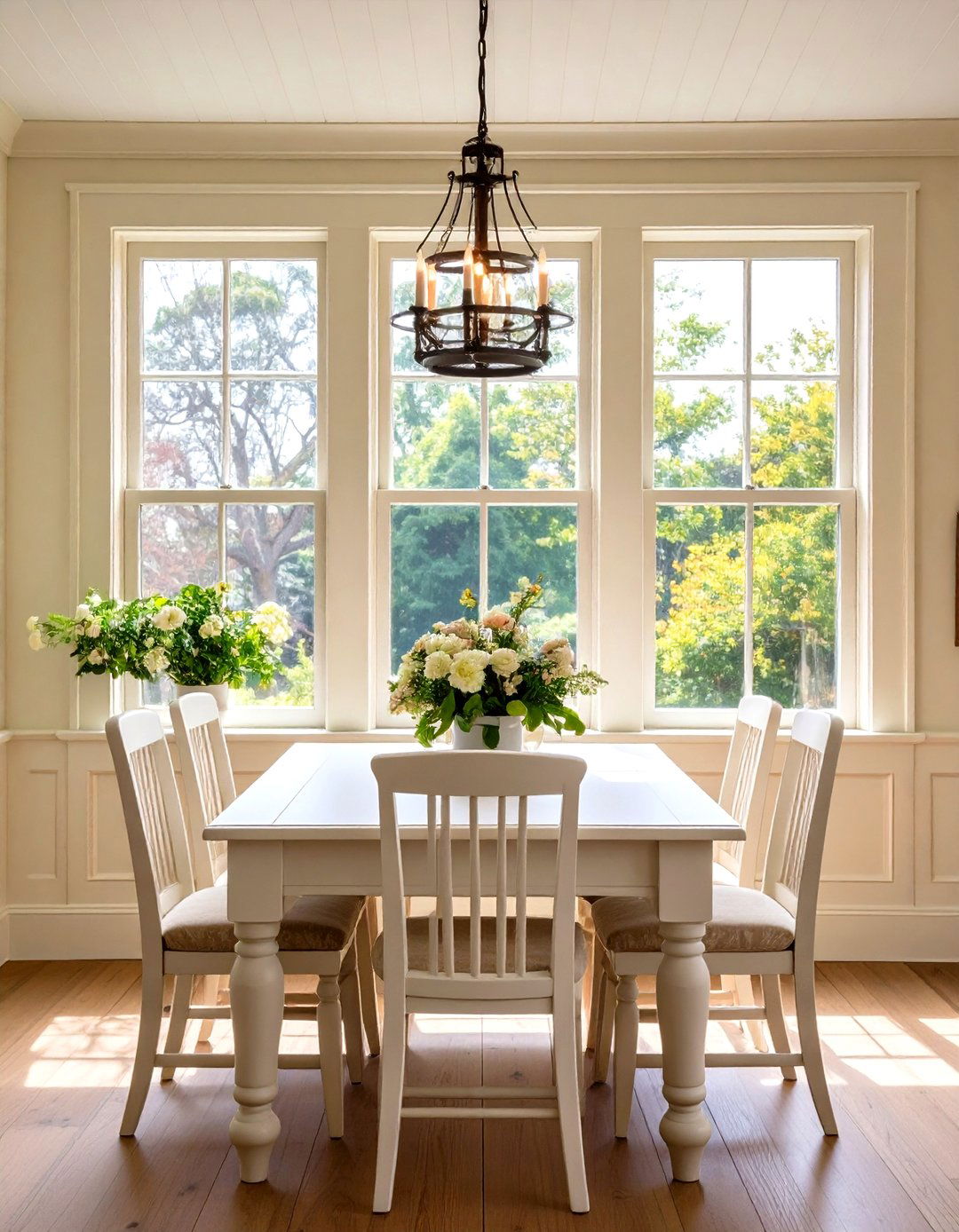




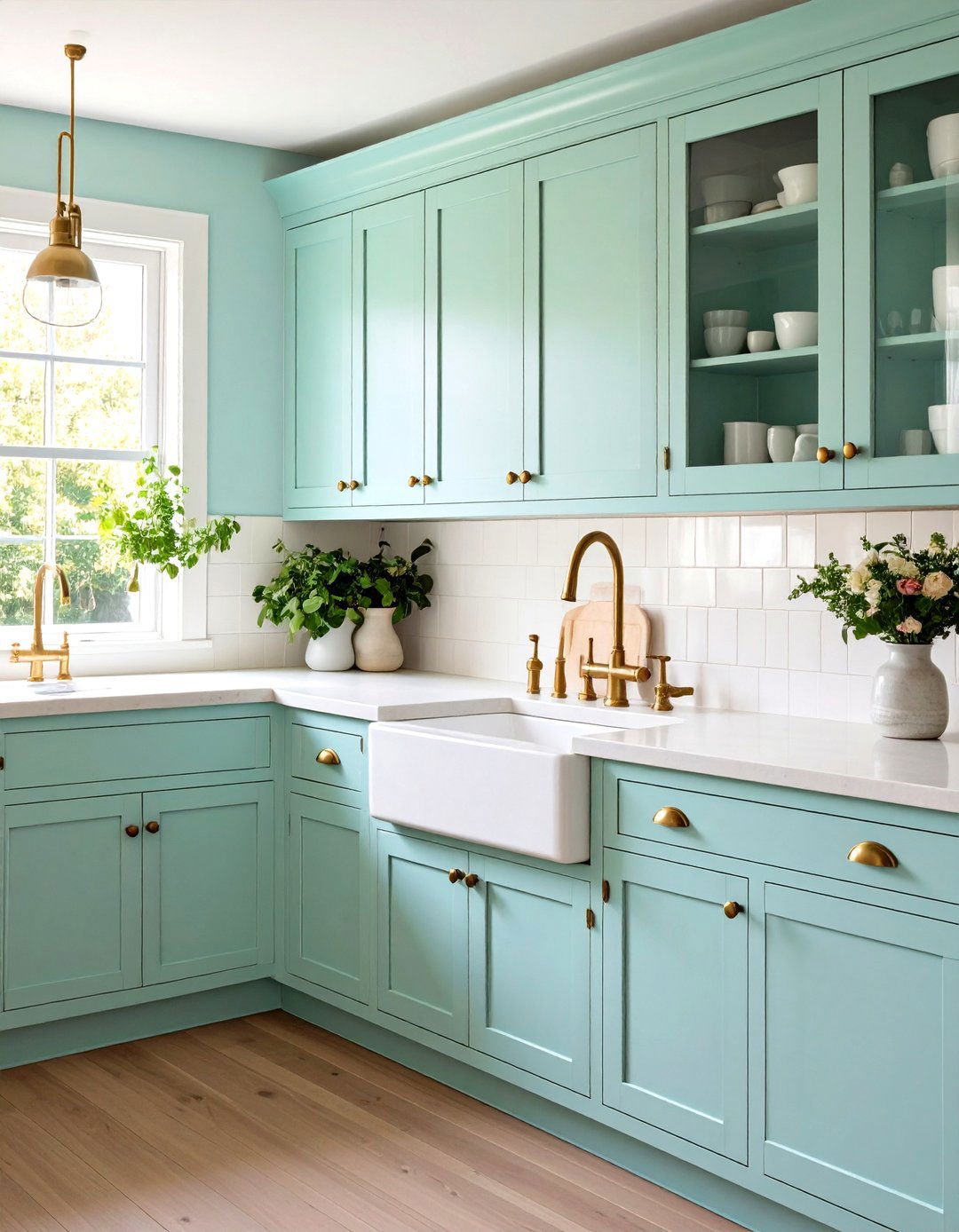
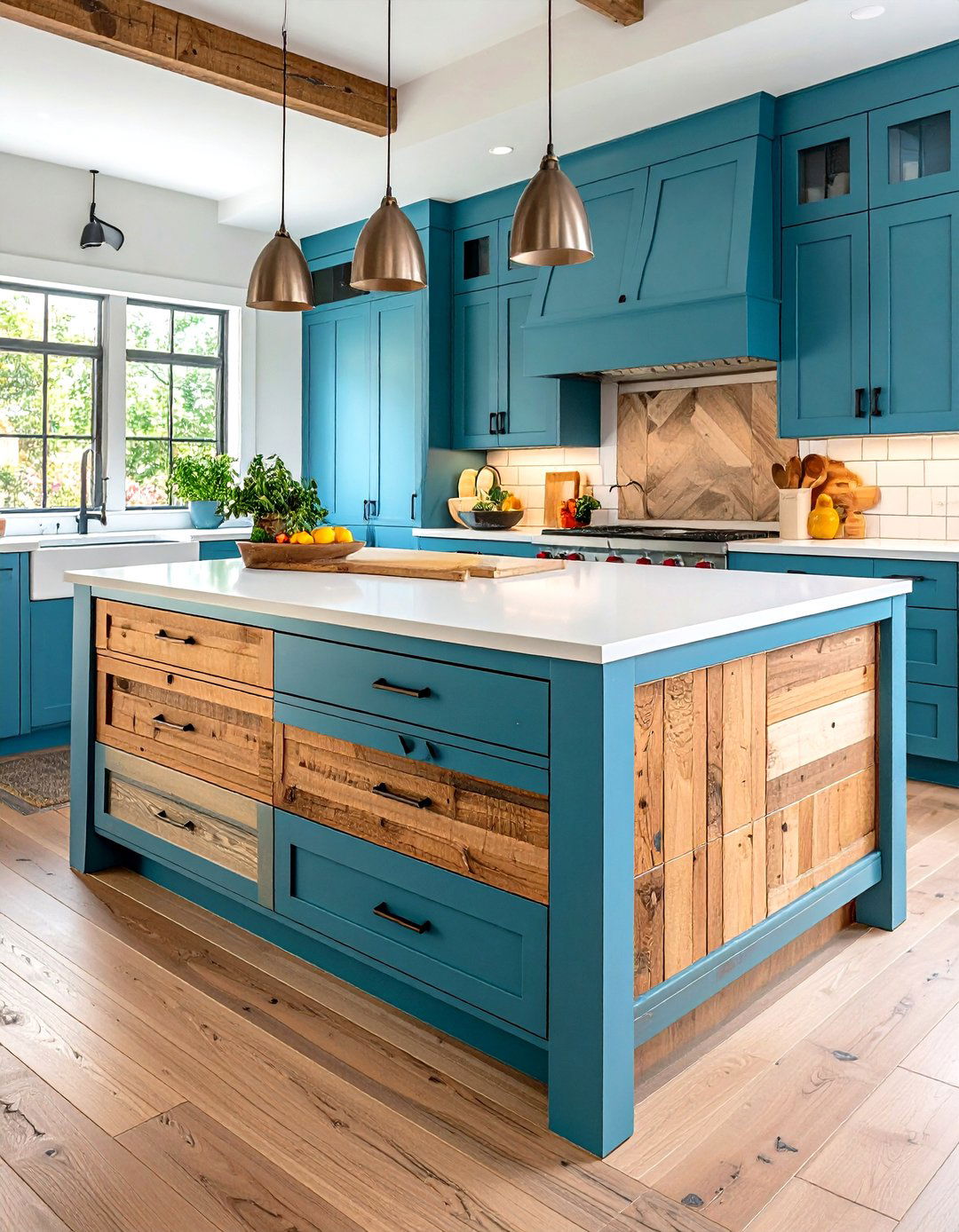
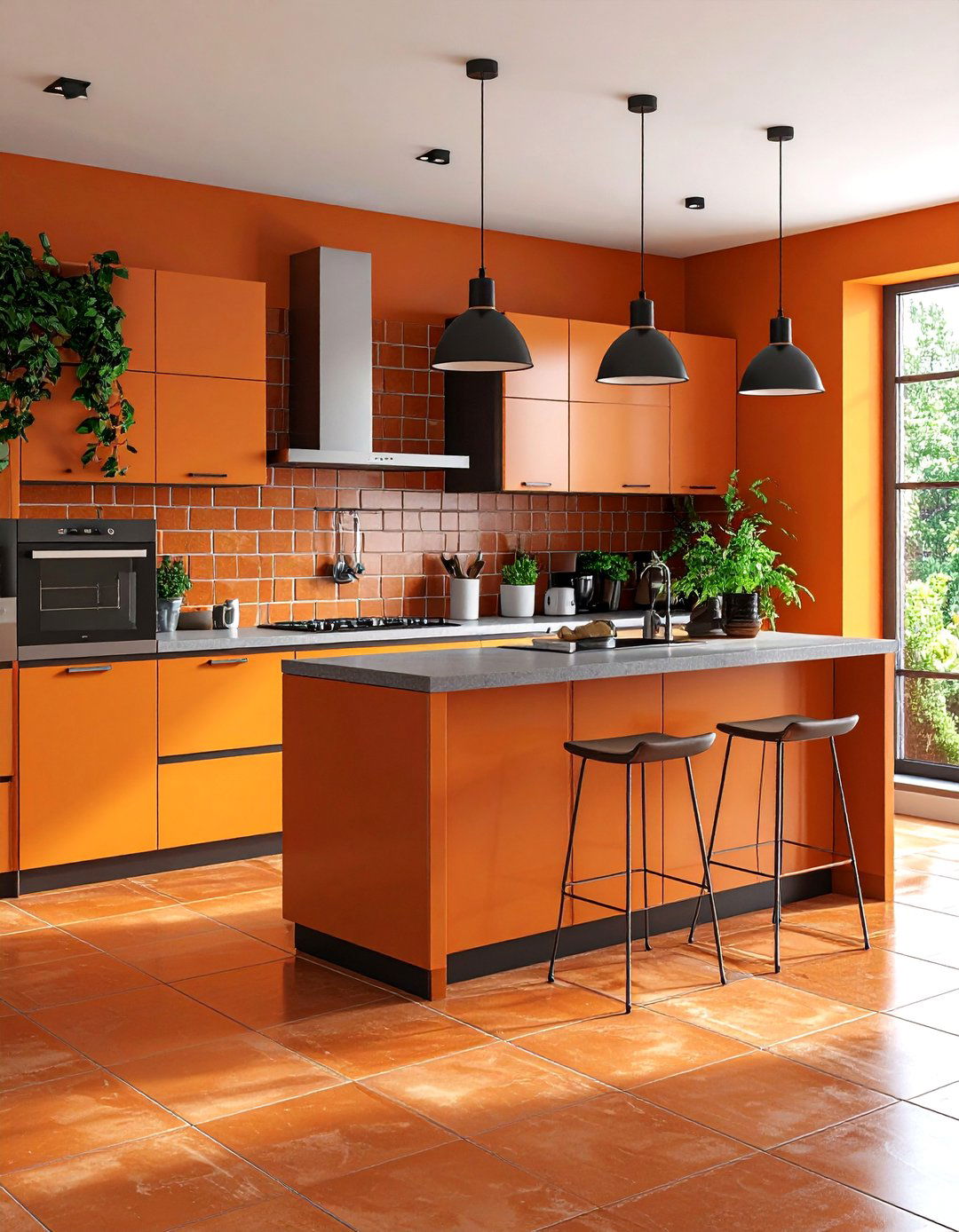
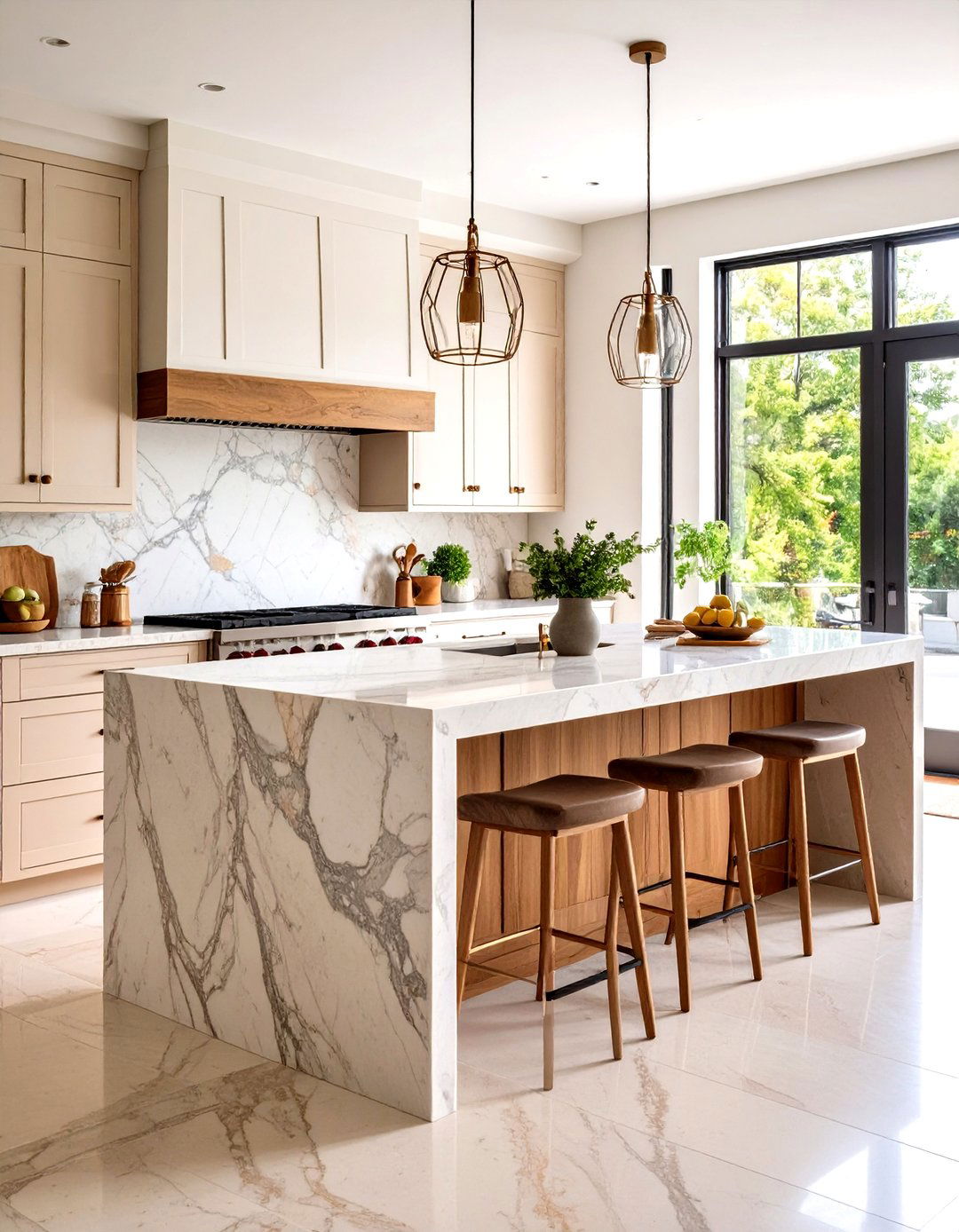
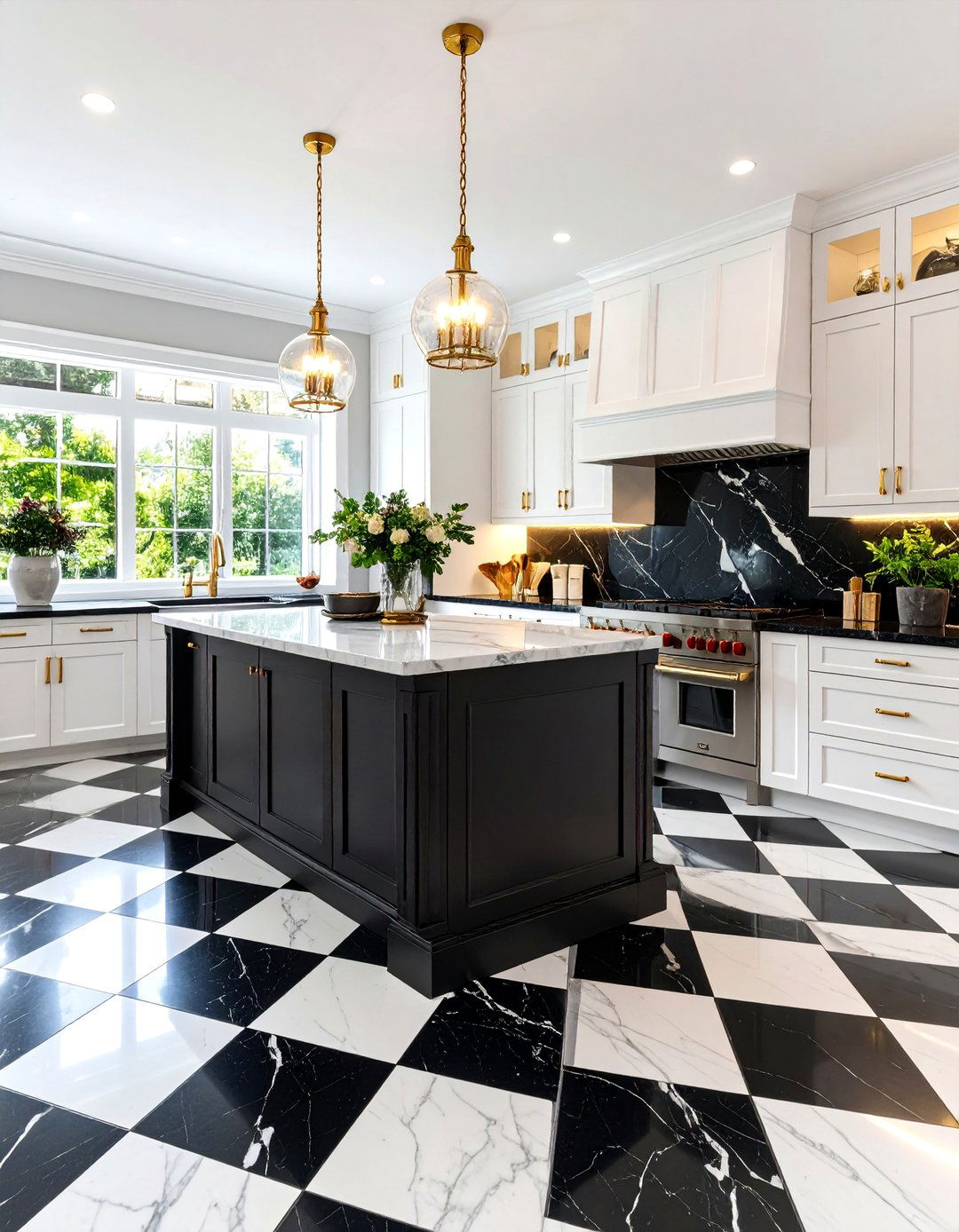
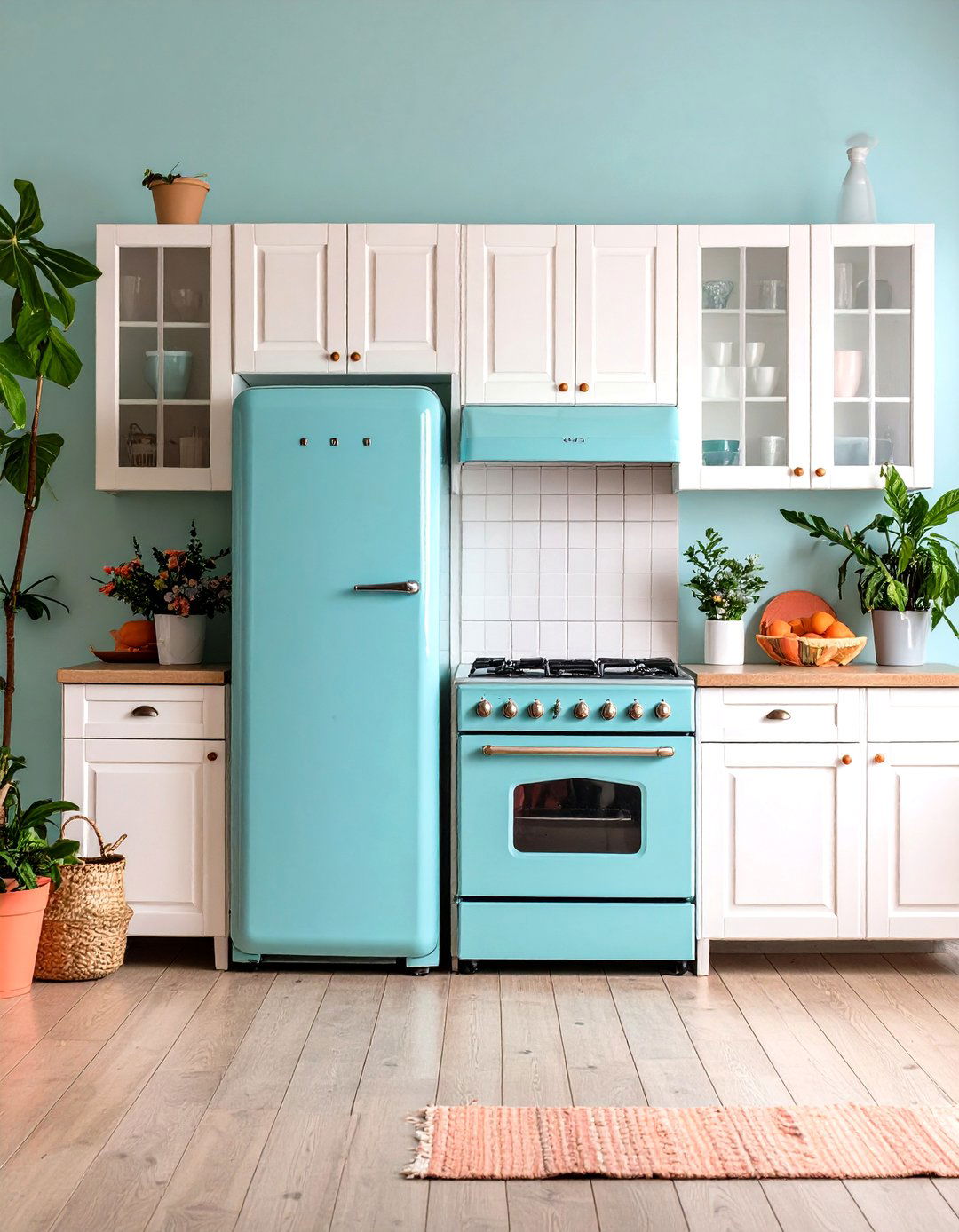
Leave a Reply